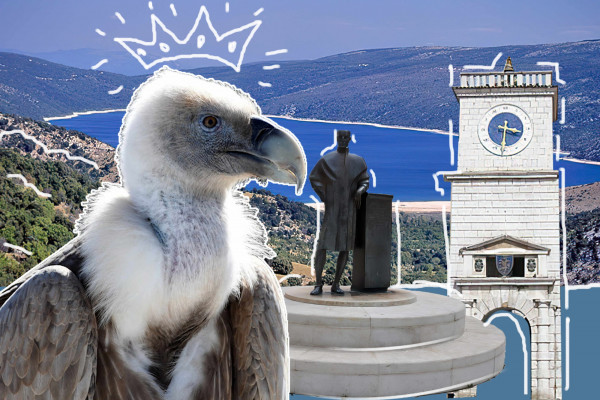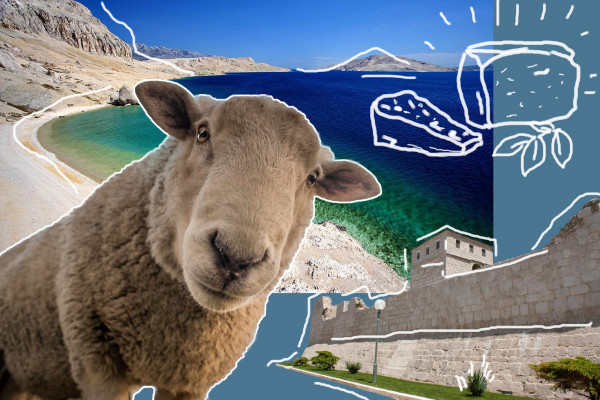Show all photos
Top 10 Interesting Places to Visit on the Island of Korcula
The island of Korcula is one of the favorite destinations for tourists from around the world. It is the sixth-largest Croatian island and has a permanent population of around 16,000. One of the first associations to the island of Korcula is certainly the great explorer Marco Polo, who is believed to have been born right here.
Korcula has been inhabited since prehistoric times. Throughout its long history, the island was Greek, Roman, Illyrian, Byzantine, and finally Croatian. Today, the island is a modern tourist destination that boasts beautiful beaches and clear sea, many cultural and historical sights and top gastronomic experiences.
Read about the top 10 places you should not miss during your trip to Korcula:
1. St. Mark's Cathedral - one of the most famous sights of the island of Korcula is St. Mark's Cathedral was built in the 15th century, in the Gothic-Renaissance style. It is located on the main town square of Korcula and it is almost impossible to avoid when you are on this beautiful island.
2. Marco Polo House - many old records confirm that Marco Polo was born and lived in the town of Korcula, as evidenced by his small stone house that has been converted into the Marco Polo Museum and is a great attraction among tourists from all over the world.
3. Land Gate - the Old Town of Korcula is entered through the Land Gate at the southern end. The front of the gate is covered with a triumphal arch built in honor of Commander Leonardo Foscolo, who was important for the defense of Dalmatia during the 17th century.
4. Church of St. Peter - this small Gothic church from the 14th century is one of the oldest in the historic center of Korcula. It is simply decorated, with the main facade decorated with a relief of St. Peter made by Bonino da Milano.
5. Gabrielis Palace - the magnificent Gabrielis Palace is a representative example of the residential architecture of the town of Korcula in the 15th and 16th centuries. Today, the City Museum is located here. The permanent exhibition shows the long and interesting history of this town in an interesting and interactive way. The reconstruction of the traditional Korcula kitchen on the top floor is especially interesting - in the old days, it was common for kitchens to be located in the attic.
6. Head of St. Anthony - continuing the walk along the sea from the town of Korcula leads to Head of St. Anthony after which this part of the town got its name. Here you can see the beautiful church of St. Anthony, to which you climb over exactly 101 steps surrounded by a cypress tree line.
7. Vela Spila - Vela Spila is an archeological site in a cave above the town of Vela Luka. The cave expands to 50 x 40 m and stands at a height of 20 m, while the entrance is about 8 m wide. There are two openings on the ceiling of the cave that allow sufficient daylight to enter. Vela Spila takes visitors on a journey through time, through the history of the human race.
8. Pupnatska Luka - Pupnatska Luka is one the most famous and largest bays on the south side of Korcula, with a beautiful, wide and very adaptable pebble beach at the bottom of the bay.
9. Zitna Beach - Zitna Beach is a spectacular bay located next to the small town of Zavalatica. Perfect for lazy days, swimming and sunbathing. This sheltered bay has beautiful, calm, turquoise water.
10. Zal Beach - of all the beaches on Korcula, this beach in the center of Prizba is certainly one of the most attractive and most visited on the entire island of Korcula. Here you will find additional facilities such as rental of recreational and sports equipment, boat rental, beach volleyball courts and beach bars.
Itinerary
Place 1
St. Mark's Cathedral
Place 1
St. Mark's Cathedral
one of the most famous sights of the island of Korcula is St. Mark's Cathedral was built in the 15th century, in the Gothic-Renaissance style. It is located on the main town square of Korcula and it is almost impossible to avoid when you are on this beautiful island
Place 2
Marco Polo House
Place 2
Marco Polo House
many old records confirm that Marco Polo was born and lived in the town of Korcula, as evidenced by his small stone house that has been converted into the Marco Polo Museum and is a great attraction among tourists from all over the world.
Place 3
Land Gate
Place 3
Land Gate
the Old Town of Korcula is entered through the Land Gate at the southern end. The front of the gate is covered with a triumphal arch built in honor of Commander Leonardo Foscolo, who was important for the defense of Dalmatia during the 17th century
Place 4
Church of St. Peter
Place 4
Church of St. Peter
this small Gothic church from the 14th century is one of the oldest in the historic center of Korcula. It is simply decorated, with the main facade decorated with a relief of St. Peter made by Bonino da Milano
Place 5
Gabrielis Palace
Place 5
Gabrielis Palace
the magnificent Gabrielis Palace is a representative example of the residential architecture of the town of Korcula in the 15th and 16th centuries. Today, the City Museum is located here. The permanent exhibition shows the long and interesting history of this town in an interesting and interactive way. The reconstruction of the traditional Korcula kitchen on the top floor is especially interesting - in the old days, it was common for kitchens to be located in the attic
Place 6
Head of St. Anthony
Place 6
Head of St. Anthony
continuing the walk along the sea from the town of Korcula leads to Head of St. Anthony after which this part of the town got its name. Here you can see the beautiful church of St. Anthony, to which you climb over exactly 101 steps surrounded by a cypress tree line
Place 7
Vela Spila
Place 7
Vela Spila
Vela Spila is an archeological site in a cave above the town of Vela Luka. The cave expands to 50 x 40 m and stands at a height of 20 m, while the entrance is about 8 m wide. There are two openings on the ceiling of the cave that allow sufficient daylight to enter. Vela Spila takes visitors on a journey through time, through the history of the human race.
Place 8
Pupnatska Luka
Place 8
Pupnatska Luka
Pupnatska Luka is one the most famous and largest bays on the south side of Korcula, with a beautiful, wide and very adaptable pebble beach at the bottom of the bay













